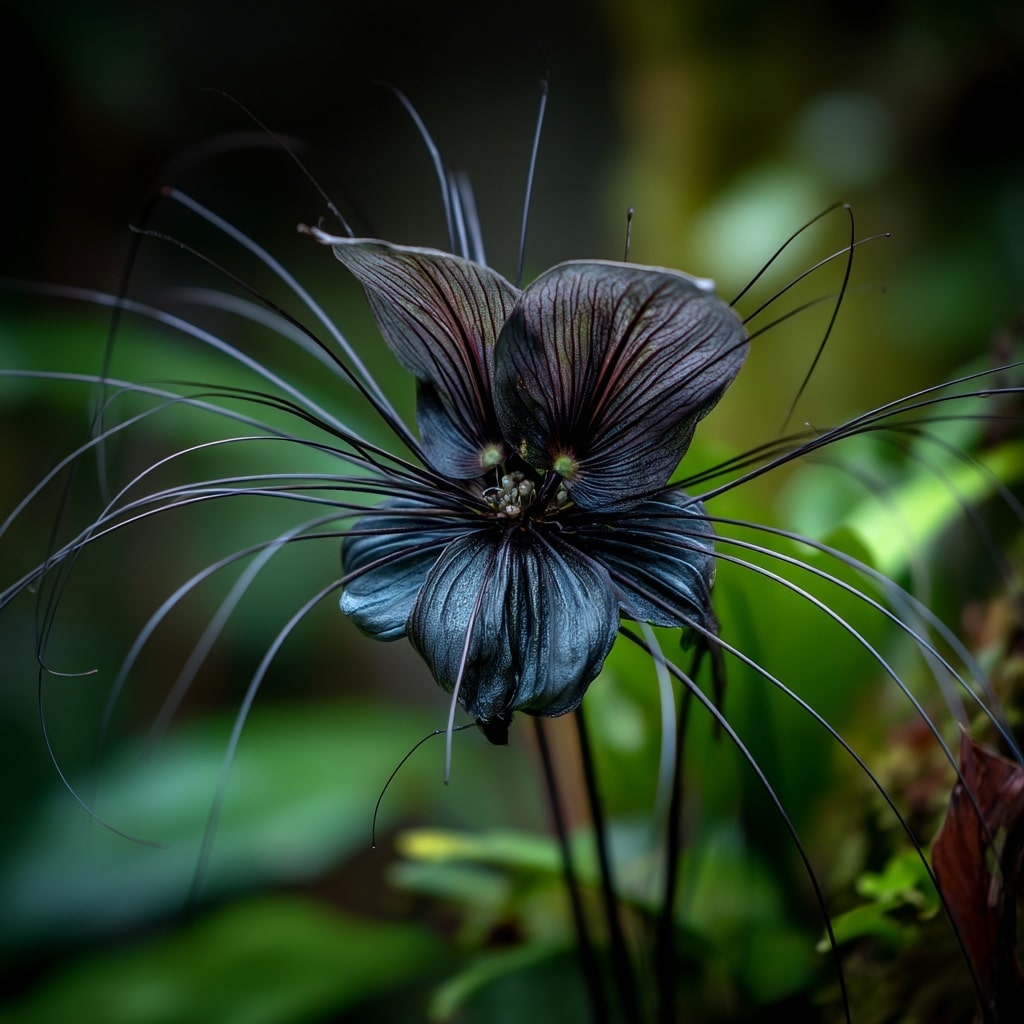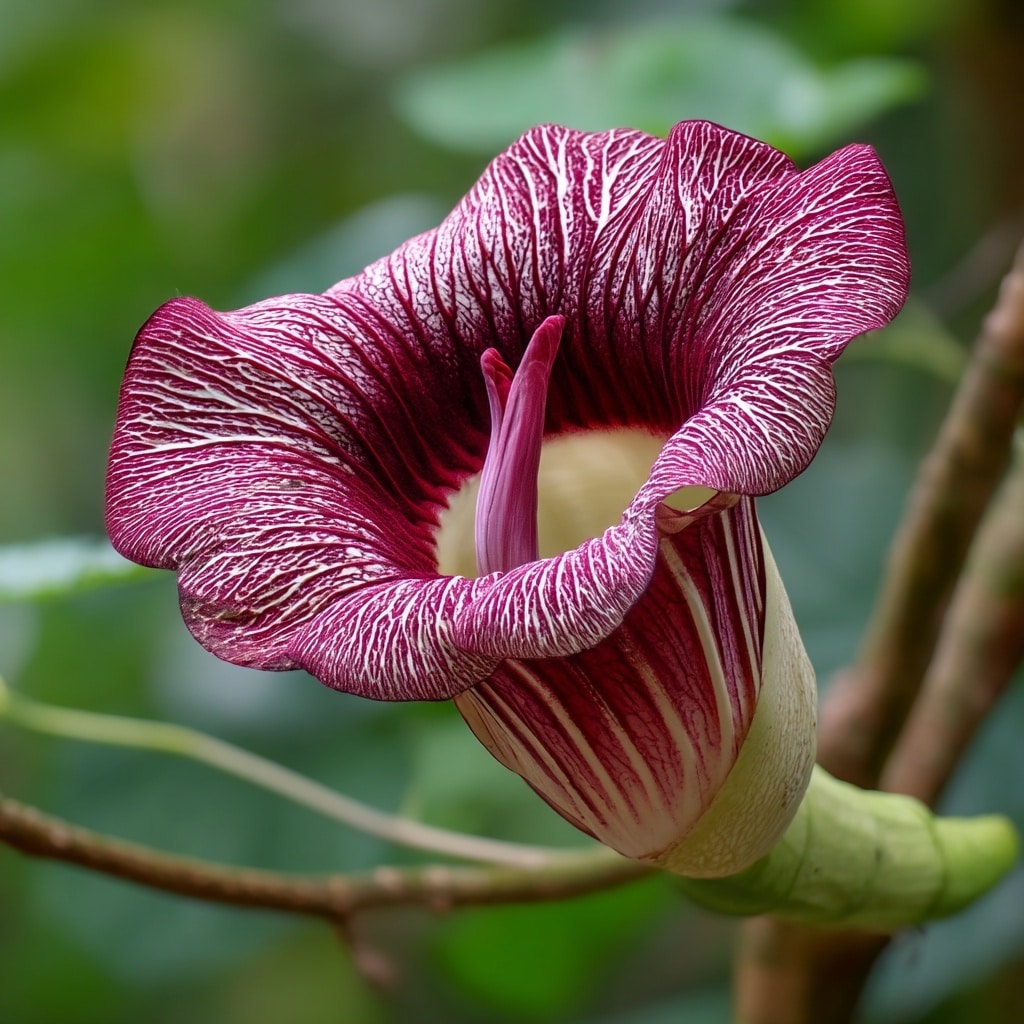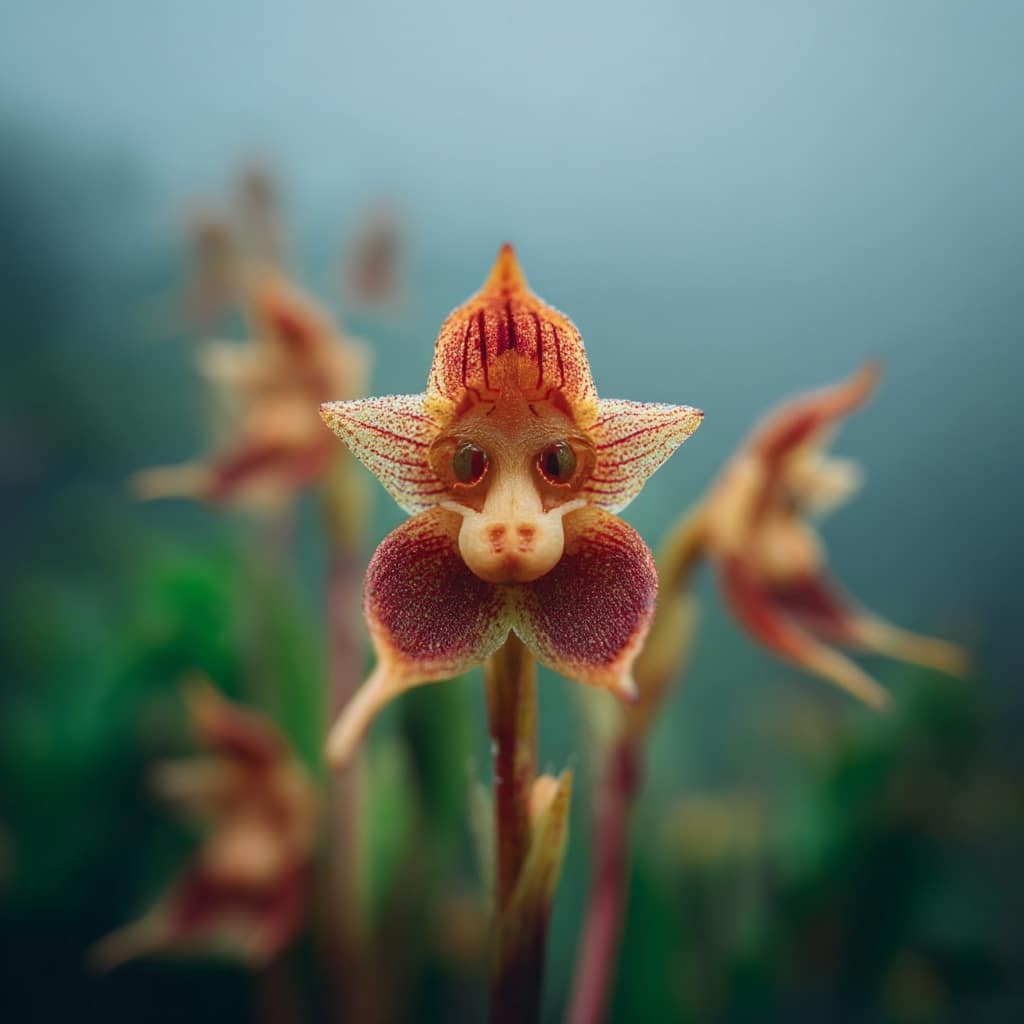Weird plants aren’t just rare curiosities — they’re a fascinating reminder of nature’s creativity. From flowers that mimic animals to blooms with eerie shapes and smells, the plant kingdom is home to some truly bizarre species that defy expectations. Whether sprouting in the high-altitude forests of South America or lurking in the shadows of tropical jungles, these plants are more than just odd-looking; they’ve evolved unique adaptations that help them survive, attract pollinators, or defend themselves. In this article, we’ll journey across the globe to highlight five of the strangest and most captivating weird plants the natural world has to offer.
Table of Contents
1. Monkey Orchid (Dracula simia)
Of all the weird plants out there, the Monkey Orchid might be the most delightfully unsettling. Native to the cool, misty cloud forests of Ecuador and Peru, this rare orchid gets its name from the uncanny resemblance of its blooms to a monkey’s face. With petals forming what look like eyes, nostrils, and even a tiny mouth, it’s a striking visual mimic that stops many in their tracks.
Monkey Orchids thrive in high-altitude environments where humidity is high and temperatures remain moderate year-round. Aside from its quirky appearance, the flower also gives off a surprisingly pleasant scent—similar to ripe oranges—which helps attract pollinators like fruit flies. Despite their visual charm, these orchids can be tricky to grow outside their native range, needing very specific moisture and light conditions.
If you’re into plants that stir curiosity and conversation, the Monkey Orchid is a bizarre beauty worth admiring—though probably not one for the average home gardener.
. Happy Alien Flowers (Calceolaria uniflora)

Few weird plants live up to their name quite like the Happy Alien Flower. Native to the rugged, wind-swept landscapes near the southern tip of South America—close to Antarctica—this bizarre-looking bloom resembles a cheerful, wide-eyed alien with an open mouth. Its appearance is so otherworldly that it’s hard to believe it’s real until you see it in person.
Discovered by Charles Darwin during his South American expedition, Calceolaria uniflora has evolved to survive in harsh, rocky climates. Its short root system helps it anchor to stones and withstand strong mountain winds. The flower’s distinctive pouch-like shape isn’t just for show—it plays a crucial role in attracting hummingbirds, which feed on its nectar. As the birds drink, pollen transfers onto their heads, aiding pollination across the sparse terrain.
Though not commonly found in nurseries or home gardens, Happy Alien Flowers are a reminder that nature’s strangest forms often have the most fascinating functions.
3. Bee Orchid (Ophrys apifera)

The Bee Orchid is a master of botanical deception—and a standout among the world’s most weird plants. Native to parts of Europe, North Africa, and the Middle East, this orchid has evolved to mimic a female bee in both appearance and scent. The result? Male bees attempt to mate with the flower, inadvertently helping with pollination in the process.
What makes Ophrys apifera even more fascinating is that it’s also self-pollinating, a rare trait in the orchid family. This dual strategy ensures the plant can reproduce even when pollinators are scarce. Its name is fitting: “Ophrys” means “eyebrow” in Greek, while “apifera” translates to “bee-bearing,” highlighting its insect-inspired floral lip.
Although beautiful and biologically clever, the Bee Orchid requires a Mediterranean climate and alkaline soils, making it a challenge to cultivate outside its native range. Still, it remains one of nature’s most brilliant illusions—a plant disguised as its own pollinator.
4. Bat Plant (Tacca chantrieri)

The Bat Plant is a botanical oddity that looks like it belongs in a gothic fairytale. Native to the dense tropical forests of Southern China and Southeast Asia, Tacca chantrieri earns its place among the top weird plants thanks to its dramatic, bat-shaped flowers and long, whisker-like bracts that can reach up to 28 inches in length.
Also known as the Devil Flower, Bat Head Lily, or Cat’s Whiskers, this plant features deep purple to almost-black petals that resemble a bat in mid-flight. It’s not just the color that adds to its mystique—its overall form makes it a natural conversation starter, especially around Halloween.
Growing up to 36 inches tall, the Bat Plant thrives in warm, humid environments with filtered light and consistently moist soil. It’s sensitive to cold and drafty conditions, making it more suitable for experienced indoor gardeners or greenhouse cultivation.
Unusual, dramatic, and a little spooky, the Bat Plant is a visual masterpiece that showcases nature’s flair for the theatrical.
5. Giant Pelican Flower (Aristolochia gigantea)

The Giant Pelican Flower, also known as the Giant Dutchman’s Pipe, is one of the most visually dramatic and biologically fascinating weird plants found in the wild. Native to Brazil and parts of Central America, this flowering vine produces enormous blooms—sometimes over a foot wide—that resemble a pelican’s open beak or a swirling, velvet curtain.
But its beauty is matched by a bit of grotesque trickery. The flower emits a pungent, rotting smell that lures in flies. Once inside, the flies are temporarily trapped by fine hairs that guide them toward the plant’s reproductive structures. After pollination, the hairs wilt, and the insect is released—none the worse for wear, but with pollen in tow.
Despite its odd odor, Aristolochia gigantea is a favorite among collectors and botanical gardens thanks to its sheer size and unusual appearance. Historically, it was used in traditional medicine for childbirth pain, though its medicinal use is no longer recommended due to toxicity concerns.
This massive flower proves that being weird often goes hand in hand with being wonderfully unique.
Conclusion
From mimicking animals to luring insects with odd smells, these weird plants highlight nature’s boundless creativity. Each of the five species we explored has evolved with fascinating forms and functions that challenge what we think a plant “should” look like. Whether it’s the playful face of the Monkey Orchid or the haunting silhouette of the Bat Plant, these botanical wonders remind us that the natural world is full of surprises—many of them stranger than fiction.
If you’re inspired by the wild side of gardening, consider exploring more unusual plants or expanding your garden with species adapted to your climate. And for those curious minds, weird doesn’t mean impractical—it means exceptional.


